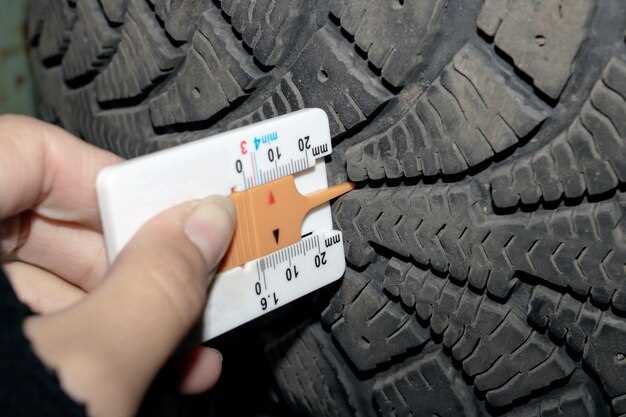
When it comes to selecting the right tires for commercial vehicles, understanding the concept of load ratings is essential. The load index is a crucial specification that indicates the maximum weight a tire can safely support when fully inflated. Each tire is assigned a unique load index number which corresponds to a specific weight capacity, making it vital for fleet managers and drivers to be informed about these ratings.
Commercial tires are designed to withstand significant weight, but exceeding the recommended load index can lead to premature wear, reduced performance, and even catastrophic tire failure. For fleet operators, knowing the load rating not only ensures compliance with safety standards but also impacts the overall efficiency of operations. Properly matched tires to their load capacity can enhance fuel economy and extend the lifespan of the vehicle.
In this article, we will delve into the intricacies of load ratings for commercial tires, explaining how to interpret load indices, the factors that influence these ratings, and tips for ensuring that your vehicles are appropriately equipped for their intended uses. Understanding these elements will help you make informed choices that prioritize safety and performance on the road.
Interpreting Load Index and Its Impact on Tire Selection

The load index is a crucial factor when selecting commercial tires. It is a numerical code that indicates the maximum load a tire can safely support. Understanding this index is essential for ensuring that vehicles operate safely and efficiently under various load conditions.
The load index is typically represented as a two or three-digit number, linked to a specific weight rating. For instance, a load index of 109 corresponds to a maximum load of 2,123 pounds. This rating is vital for fleet operators and businesses that rely on transportation for their operations. Choosing a tire with an inappropriate load index can lead to tire failure, compromising safety and increasing operating costs.
Additionally, the load index impacts overall tire performance, including handling, durability, and fuel efficiency. A tire with a higher load rating often features reinforced construction, enabling it to endure heavy loads without succumbing to wear or damage. This structural integrity is essential not only for performance but also for reducing maintenance expenses over time.
When selecting tires, it’s essential to consider both the load requirements of the vehicle and the load index ratings of the available tires. Factors such as vehicle type, weight distribution, and intended usage must be carefully evaluated to ensure optimal tire selection.
In summary, a thorough understanding of the load index and its implications on tire selection can significantly influence a vehicle’s operational efficiency and safety. By choosing the right tire based on the load index, businesses can enhance productivity while minimizing risks associated with inadequate tire performance.
Calculating Maximum Load Capacity Based on Tire Specifications
Understanding how to calculate the maximum load capacity of a tire is essential for ensuring safety and performance in commercial vehicles. The load capacity is primarily determined by the tire’s specifications, which include the load index. This index is a numerical code that indicates the maximum weight a tire can safely support when properly inflated.
To calculate the maximum load capacity, first, locate the load index number on the tire’s sidewall. This number corresponds to a specific weight value, which can be found in a load index table. For instance, a load index of 100 generally represents a capacity of 800 kg (1764 lbs). Therefore, knowing the load index directly informs you about the potential load the tire can handle.
When examining data, keep in mind that the maximum load rating is contingent upon proper tire pressure. Underinflated tires can lead to reduced load capacities, compromising safety and efficiency. Always refer to the vehicle manufacturer’s guidelines to determine the recommended tire pressure for optimal load conditions.
In cases where multiple tires are involved, such as dual configurations, add the load capacities of all tires to ascertain the total load-bearing capability. For example, if using two tires with a load index of 100, their combined load capacity would be 1600 kg (3528 lbs). Always ensure that the sum of the load capacities meets or exceeds the total weight the vehicle is required to carry.
Ultimately, correctly calculating the maximum load capacity based on tire specifications is vital for maintaining vehicle integrity and performance. Regularly check both tire specifications and load indices to stay informed and safe on the road.
Best Practices for Matching Load Ratings with Vehicle Requirements

Understanding the load rating of tires is essential for the performance and safety of commercial vehicles. It is crucial to match the load rating of a tire with the vehicle’s specific requirements to ensure optimal performance on the road.
First and foremost, consult the vehicle manufacturer’s specifications (spec) for recommended load ratings. This information is typically found in the vehicle’s owner’s manual or on a label located on the driver’s side door jamb. It outlines the maximum load the vehicle can carry safely, which directly influences the type of tire required.
Next, assess the typical load your vehicle will carry. Consider factors such as cargo weight, passenger capacity, and any additional equipment that may affect the overall load. Make sure to account for these figures when selecting tires to prevent overloading, which can lead to tire failure.
Additionally, when choosing tires, look for markings that indicate their load ratings, such as the Load Index. This numeric code corresponds to the maximum load a tire can support. Ensure that the selected tires meet or exceed these load requirements to maintain safety and performance standards.
Another best practice is to evaluate the tire’s service description, which includes both the load rating and speed rating. This combination ensures that the tire can handle not only the weight but also the intended speed of the vehicle, providing a balanced performance profile.
Regularly inspect your tires for wear and damage, as a compromised tire can lose its load capacity significantly. Maintaining proper tire pressure is also vital; under-inflated tires can increase rolling resistance and reduce load-carrying capabilities.
Finally, consult a tire professional if uncertain about matching load ratings with vehicle requirements. They can provide expert advice tailored to your specific needs and ensure that you select the right tire for your vehicle’s load demands.




